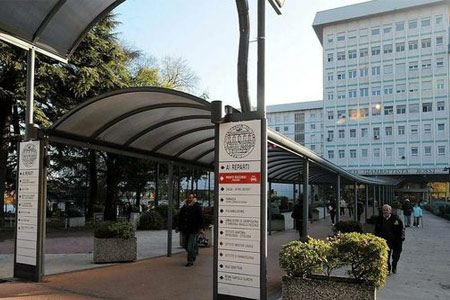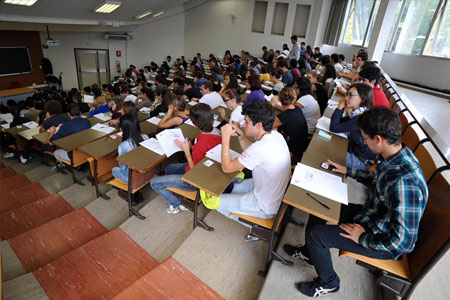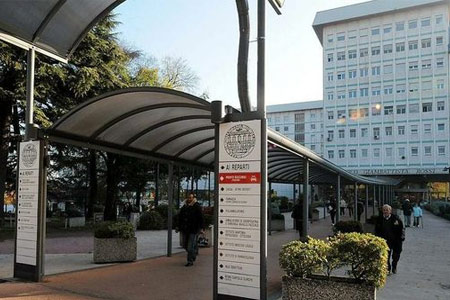- Autori:
-
Bruno, Salvatore; Becker, Daniel; Prendes, Carlota F.; Veraldi, Gian Franco; Pichlmaier, M.; Peterss, Sven; Tsilimparis, Nikolaos
- Titolo:
-
Distal Endovascular Extension After FET: Short and Mid-Term Outcome in a High-Volume Single-Center Experience
- Anno:
-
2025
- Tipologia prodotto:
-
Articolo in Rivista
- Tipologia ANVUR:
- Articolo su rivista
- Lingua:
-
Inglese
- Referee:
-
No
- Nome rivista:
- Annals of Vascular Surgery
- ISSN Rivista:
- 0890-5096
- N° Volume:
-
111
- Intervallo pagine:
-
46-54
- Parole chiave:
-
FET, endovascular, extension
- Breve descrizione dei contenuti:
- Background: This study aims to investigate results and outcomes of distal endovascular extensions after frozen elephant trunk (FET) procedure. Methods: Between September 2018 and December 2022, all consecutive patients who underwent thoracic endovascular aortic repair (TEVAR) or complex thoraco-abdominal repair (TAA-EVAR) after FET were included in the study. Patients were assigned to "Aneurysm" group or to "Dissection" group according to underlying patology before FET repair. The primary end points were overall technical success and early reintervention rate. Secondary end points included 30-day and mid-term overall survival. Results: A total of 29 patients were included in the study and divided as follows: n = 12 in the aneurysm group and n = 17 in the dissection group. The mean age of the population was 64.6 ± 10.2 years, and 69% were male. All patients received TEVAR as primary extension while 9 of them underwent further extension to a subsequent TAA-EVAR in a second stage. Among the dissection group, 7 patients experienced a distal stent-graft-induced new entries caused by the stent-graft portion of the FET. Technical success of the first stage (TEVAR) was fully achieved as well as for the second stage (TAA-EVAR). Within the first 30 days, no patient expired or required early reinterventions. Freedom-from-reintervention at 36 months was 72% and 64% in the aneurysm and dissection group, respectively. Overall, 1 major adverse event (3.4%) and 3 access-related complication (10.3%) occurred among the entire cohort. The Kaplan-Meier survival estimation showed a nonsignificant log-rank value (P = 0.248) with a survival rate of 91.7% and 100% at 12, 24, and 36 months each for aneurysm and dissection group, respectively. Conclusions: Distal endovascular extensions after FET repair are feasible with low perioperative morbidity and mortality regardless of the underlying pathology. Technical success rate of endovascular extension is high, but aortic-related reintervention rate remains quite consistent over time. Thus, a close surveillance is advocated for such patients.
- Id prodotto:
-
144659
- Handle IRIS:
-
11562/1157412
- ultima modifica:
-
15 marzo 2025
- Citazione bibliografica:
-
Bruno, Salvatore; Becker, Daniel; Prendes, Carlota F.; Veraldi, Gian Franco; Pichlmaier, M.; Peterss, Sven; Tsilimparis, Nikolaos,
Distal Endovascular Extension After FET: Short and Mid-Term Outcome in a High-Volume Single-Center Experience
«Annals of Vascular Surgery»
, vol.
111
,
2025
,
pp. 46-54
Consulta la scheda completa presente nel
repository istituzionale della Ricerca di Ateneo 








